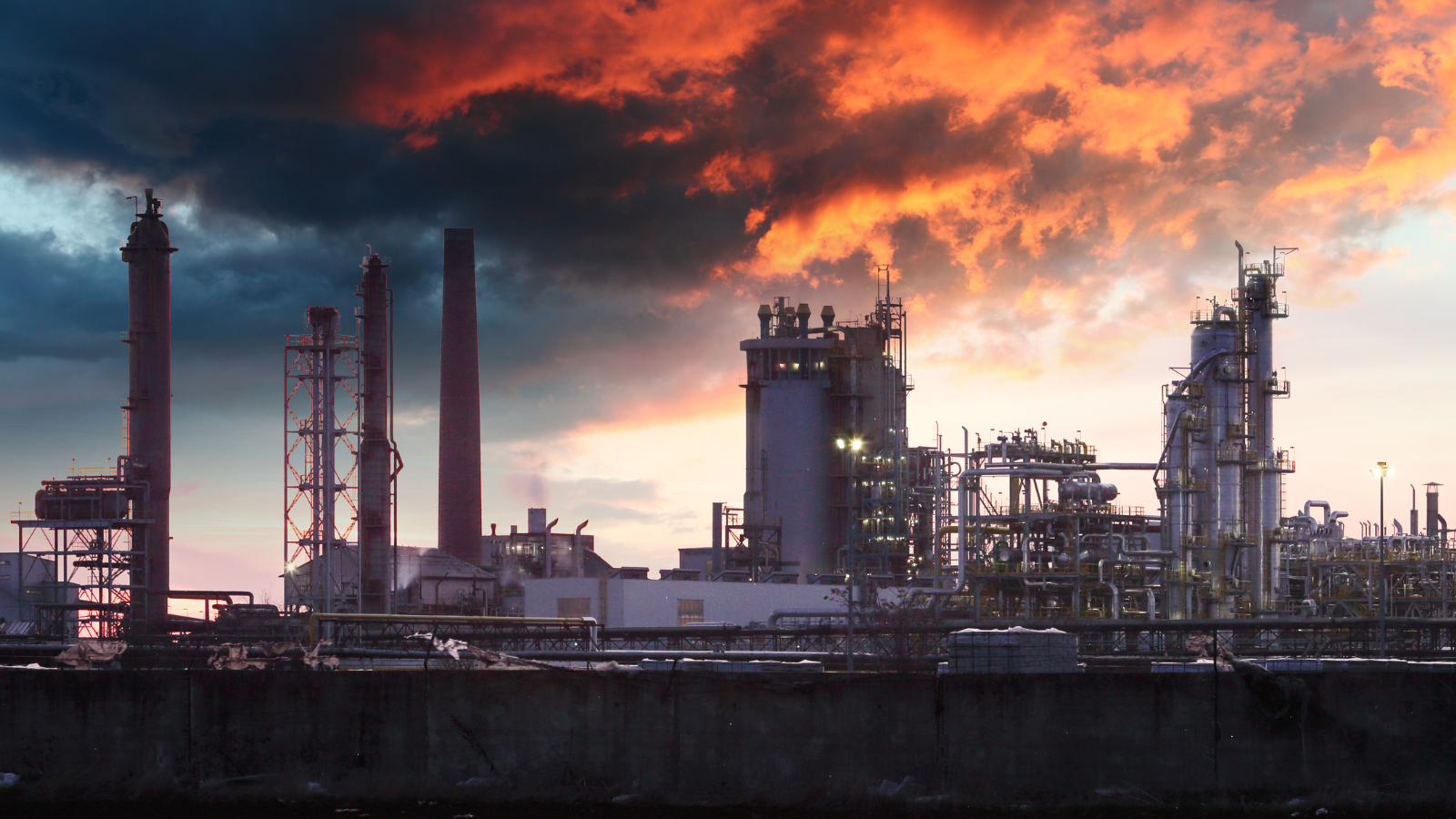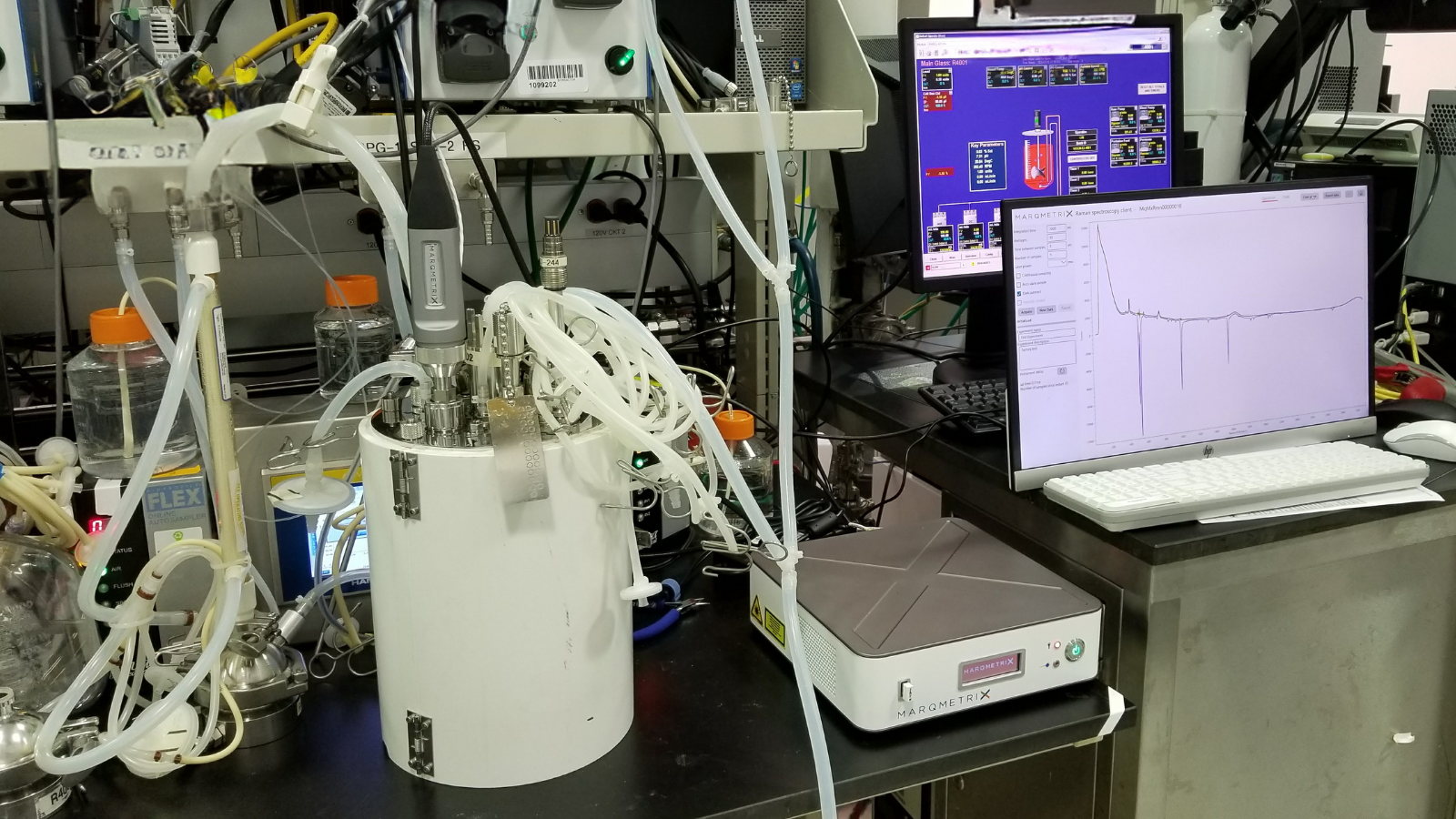The production of sustainable aviation fuel (SAF) is benefited in multiple ways from Raman spectroscopy’s powerful analytical technique. By using light to study molecular vibrations and rotations in materials, it can produce a unique fingerprint-like spectrum that can identify and characterize molecules. Analysis at the molecular level allows Raman spectroscopy to play a key role in several steps in the production sustainable aviation fuel:
- Quality Control and Monitoring: Raman spectroscopy can analyze the chemical composition of various components (commonly referred to as “feedstock”) involved in the production of sustainable airline fuels, such as biofuels derived from algae, waste oils, or other renewable sources. This key analysis helps to ensure the purity and quality of these fuels by identifying the presence of specific molecules or contaminants that might affect performance or compliance with aviation fuel standards. In practice, a bioreactor Raman probe can be used in conjunction with a spectrometer to keep purity intact and minimize risk of contamination.
- Process Optimization: During the production process, a Raman spectrometer can instantly monitor molecular changes occurring during different stages of fuel production (e.g., pyrolysis, gasification, catalysis) in real-time. It allows for quick analysis without complex sample preparation, providing instant feedback to adjust reaction conditions, enhancing efficiency, and improving yield of the desired fuel quality.
- Contaminant Detection: Ensuring the purity and quality of sustainable aviation fuel is vital to its adoption across the industry. Impurities or contaminants that might affect the fuel’s performance or compliance with industry standards can be detected via a Raman spectrometer (and sampling optic such as a flow cell) and then eliminated. This is another key step in maintaining the quality and safety of the produced fuel.
- Carbon Footprint Analysis: Assessing the environmental impact of different fuel production methods is essential for sustainability. Raman spectroscopy, in combination with other techniques, can help in quantifying carbon content, identifying carbon-based compounds, and monitoring the presence of pollutants or unwanted by-products, contributing to a comprehensive analysis of the overall carbon footprint of the fuel production process.
- Research and Development: In the quest for more efficient and sustainable fuel production methods, Raman spectroscopy plays a crucial role in research and development. It helps in studying new catalysts, reaction pathways, and refining processes to enhance the yield and sustainability of aviation fuels.
Researchers can employ Raman spectroscopy to explore and understand molecular structures and chemical processes involved in the development of novel sustainable fuel sources like sustainable aviation fuel. This could involve studying new feedstock materials or innovative conversion methods for biofuel production.
Overall, Raman spectroscopy’s ability to provide rapid, non-destructive, and detailed chemical analysis makes it a powerful tool in the development and production of sustainable aviation fuels, ensuring both quality and efficiency in the process leading to a wider and more economical adoption of SAF in the airline industry.




